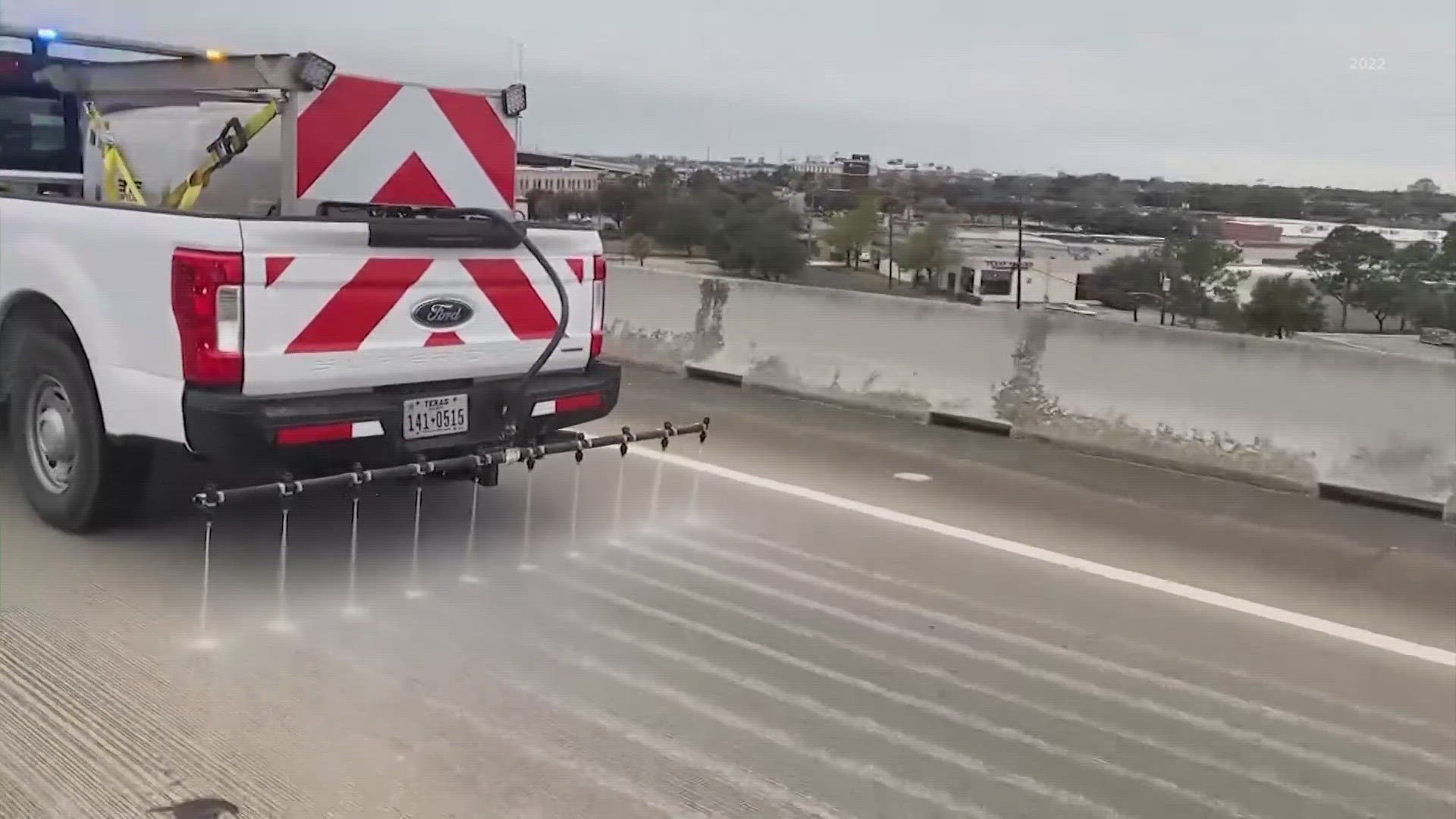HARRIS COUNTY, Texas — Harris County Precinct 3 is changing the way it keeps ice off the roads as Southeast Texas prepares for an Arctic cold front arriving this weekend.
Let's face it. There isn't a big need for snow plows here in Houston but icy roads are still possible during extreme winter weather events.
Ice can wreak havoc on your commute so local agencies are treating as many roads as possible in advance.
More on Arctic cold front
Precinct 3, which stretches from northwest Harris County to northeast Harris County, used to use chat rock on roads when temperatures dipped.
“We used to take rock and spread it on bridges," Precinct 3 Commissioner Tom Ramsey explained. “That provided traction during times of freezing cold weather. Bad weather that created all kinds of problems."
Ramsey explained they are now switching over to something called brine, a salty solution spread over the roads.
“We'd gone through and actually fabricated four, five trucks and they're called brine trucks. That's just a saltwater solution that we spread on the bridge. And we've got 330 bridges that we spread on the bridges that keeps the water from freezing," he said.
Instead of just providing drivers with a little extra traction, they are now going to try and stop the ice from forming in the first place.
“...If the precipitation comes before the cold weather, then we'll begin the treatment process...," Ramsey said. "Prior to that and all during, of course, any ice and snow, we'll be laying out the liquid on the bridges."
Ramsey said the salty brine solution will not only be quicker to spread on the hundreds of roads in his precinct, but it will also cost the taxpayers a lot less.
While you may want to give your car a good wash after driving on brine-treated roads, it does less damage than that chat rock.
“I can't tell you how many broken windshields I've had because we've gone through a bridge, and thank goodness the rock was there until it's thrown and hit your windshield and it's broken," he said.
How brine solution works on icy roads
What is the science behind this brine solution? Meteorologist Chita Craft explained how it works.
She said it is similar to when crews salt the ground before a big freeze. It's a mixture of salt, water and sodium chloride, but in a liquid spray so that they can cover more ground at a lower cost.
First understand when water is in its liquid state, like rain, the molecules are loosely packed.
Whenever water reaches the freezing point of 32 degrees or below, molecules are then packed more tightly. On roads this causes a big problem.
Wet, icy and slushy roads reduce traction between a car's tires and the road surface. If a driver were to hit ice, their car could suddenly go into a skid, which is a scary situation.
That's why there is a need to break up these molecules to limit ice or slush on the roads.
Salt or the brine solution does not necessarily melt ice or snow with increased heat. It merely brings the freezing point of water to lower temperatures. At the molecular level, the salt molecules get in the way of the bonding water molecules helping it not to freeze.
The regular freezing point of water is 32 degrees. Adding sodium chloride lowers that freezing point to 15 degrees.
This is how using science can make everyone safer on the roads.

